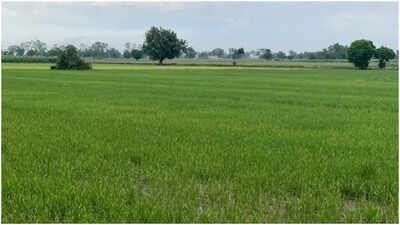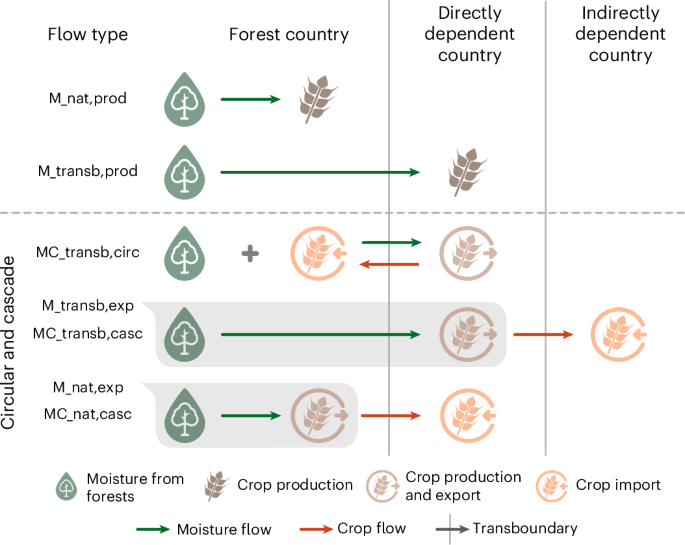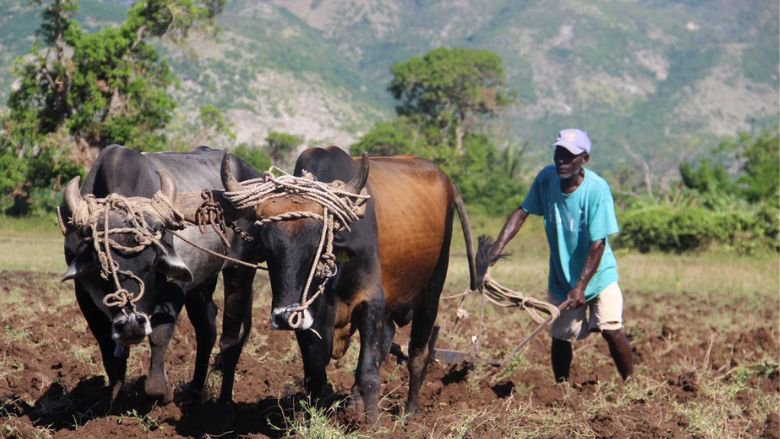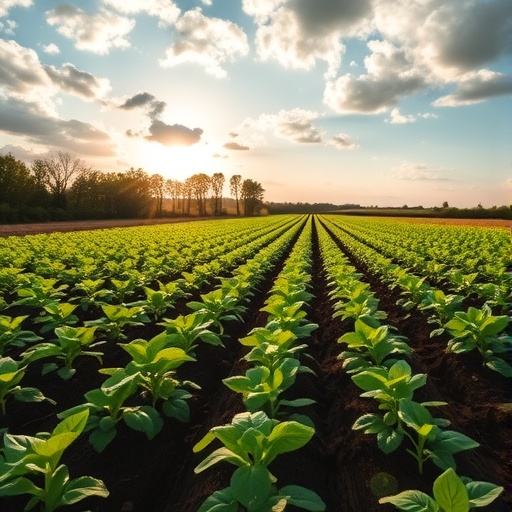Analysis of Climate Adaptation Finance for Smallholder Agriculture and its Impact on Sustainable Development Goals
Executive Summary
A report by Climate Focus for the Family Farmers for Climate Action alliance indicates a critical shortfall in funding for smallholder farmers’ climate adaptation needs. This financial gap directly threatens the achievement of several Sustainable Development Goals (SDGs), particularly SDG 2 (Zero Hunger), SDG 1 (No Poverty), and SDG 13 (Climate Action). The analysis, released ahead of the COP30 Climate Summit, quantifies the disparity between required investment and current financial flows, urging a redirection of global funds towards resilient agriculture.
Financial Disparity and SDG Implications
The Climate Adaptation Funding Gap
- Required Annual Funding: Smallholder farmers require US$443 billion per year to adapt to climate impacts. This equates to an average investment of US$952 per hectare.
- Current Global Contribution: In 2021, global spending on smallholder adaptation was only US$1.59 billion, representing just 0.36% of the identified need.
- Smallholder Self-Funding: Farmers currently bear the majority of the cost, spending an estimated US$368 billion annually—or 20-40% of their income—on adaptive measures.
Comparative Global Expenditures and SDG Alignment
The required funding for adaptation is significantly less than current global spending on activities that can be detrimental to sustainable development.
- Harmful Agricultural Subsidies: The US$443 billion needed is less than the US$470 billion spent annually on agricultural subsidies that are often harmful to the environment, undermining SDG 12 (Responsible Consumption and Production).
- Debt Servicing: The required amount is approximately one-third of the US$1.4 trillion that developing countries spent on debt servicing in 2023, a financial burden that limits their capacity to invest in climate action and poverty reduction goals.
The Role of Smallholder Farmers in Achieving Global Goals
Contribution to SDG 2 (Zero Hunger) and SDG 1 (No Poverty)
- Smallholder farmers produce half of the world’s food calories, making them essential for global food security.
- They support the livelihoods of 2.5 billion people, and investment in their resilience is a direct investment in poverty eradication.
- They are central to global supply chains for essential commodities, including rice, wheat, cocoa, and coffee.
Advancing SDG 13 (Climate Action) and Ecological Resilience
- Investment in smallholders is described as an “ecological imperative,” as they are pioneers of sustainable practices like agroecology.
- These practices build climate resilience by restoring natural ecosystems, contributing directly to climate mitigation and adaptation targets under SDG 13.
Policy Recommendations and the Path Forward at COP30
Call for Increased and Accessible Finance Aligned with SDG 17 (Partnerships for the Goals)
Farmer organizations, including the Eastern Africa Farmers Federation (EAFF) and the Asian Farmers’ Association (AFA), are calling for a major policy shift.
- Governments must agree to a substantial increase in adaptation finance to protect farms from climate-related disasters.
- Developed nations must deliver on their pledge to double adaptation finance to US$40 billion by 2025.
- Funding mechanisms must be reformed to provide farmer organizations with direct access to finance, enhancing efficiency and impact.
Strategic Initiatives for COP30
- Establish a Farmers Resiliency Fund: A proposal for a new, dedicated fund led by family farmer organizations to ensure resources are targeted effectively.
- Refine Adaptation Goals: The global goal on adaptation must include specific indicators to track finance flows to smallholders.
- Support the Brazilian Presidency’s Agenda: Leverage the COP30 focus on sustainable agriculture to mobilize finance and integrate the voices of family farmers into discussions on finance, loss and damage, and the just transition.
Analysis of Sustainable Development Goals in the Article
1. Which SDGs are addressed or connected to the issues highlighted in the article?
-
SDG 1: No Poverty
The article connects to this goal by focusing on smallholder farmers, who are often among the world’s poor. It highlights their economic vulnerability to climate change and the financial burden they bear (spending 20-40% of their income on adaptation), which directly impacts their livelihoods and poverty levels.
-
SDG 2: Zero Hunger
This is a central theme, as the article explicitly states that smallholder farmers “produce half of world’s food calories” and are “central to global supply chains of commodities such as rice, wheat, cocoa and coffee.” Investing in their climate adaptation is presented as a direct “investment in the food security of people right around the globe.”
-
SDG 13: Climate Action
The entire article is framed around climate change, specifically the need for “climate adaptation costs” for smallholder farmers to build resilience against “storms, drought, and heatwaves.” It discusses international climate negotiations (COP30), adaptation finance, and the global goal on adaptation.
-
SDG 17: Partnerships for the Goals
The article discusses the need for global financial commitments and partnerships. It mentions the failure of developed nations to deliver on finance promises, the call for governments and funders to increase adaptation finance, and the proposal for a “new dedicated Farmers Resiliency Fund” which requires international cooperation.
2. What specific targets under those SDGs can be identified based on the article’s content?
-
Target 1.5: By 2030, build the resilience of the poor and those in vulnerable situations and reduce their exposure and vulnerability to climate-related extreme events and other economic, social and environmental shocks and disasters.
The article’s core argument is the need for US$443 billion annually for smallholders to “build resilience and adapt to climate impacts,” which directly aligns with this target.
-
Target 2.3: By 2030, double the agricultural productivity and incomes of small-scale food producers…
While not explicitly mentioning doubling income, the article’s call for investment to protect farms from climate havoc and support livelihoods is essential for achieving this target. Without adaptation, productivity and incomes are at severe risk.
-
Target 2.4: By 2030, ensure sustainable food production systems and implement resilient agricultural practices that increase productivity and production, that help maintain ecosystems…
The article promotes “sustainable resilient agriculture such as agroecology” and highlights that farmers are “pioneering practices such as agroecology that build climate resilience by restoring nature’s safety net,” which is the essence of this target.
-
Target 13.1: Strengthen resilience and adaptive capacity to climate-related hazards and natural disasters in all countries.
This is directly addressed by the call to fund smallholder farmers’ efforts to adapt to “storms, drought, and heatwaves that are wreaking havoc across the globe.”
-
Target 13.a: Implement the commitment undertaken by developed-country parties… to a goal of mobilizing jointly $100 billion annually… to address the needs of developing countries in the context of meaningful mitigation actions and transparency on implementation and fully operationalize the Green Climate Fund through its capitalization.
The article critiques the lack of progress on this front, questioning if “developed nations will deliver on their promise to double adaptation finance to US$38-40 billion by 2025.”
-
Target 17.3: Mobilize additional financial resources for developing countries from multiple sources.
The call for governments and funders to provide a “major boost in adaptation finance” and the proposal to create a “new dedicated Farmers Resiliency Fund” are direct examples of efforts to mobilize resources as described in this target.
3. Are there any indicators mentioned or implied in the article that can be used to measure progress towards the identified targets?
Yes, the article provides several quantitative and qualitative indicators that can be used to measure progress:
-
Financial Flow for Adaptation: The article provides a clear baseline and target. The indicator is the amount of funding provided for smallholder adaptation.
- Current Value: US$1.59 billion in 2021.
- Required Value: US$443 billion a year.
- Progress Metric: The percentage of the required funding that is actually delivered (currently stated as “just 0.36% of what’s needed”).
-
Investment per Hectare: A more granular metric to measure the intensity of investment.
- Required Value: An annual average investment of US$952 for one hectare farm.
-
Misaligned Financial Flows: The article mentions harmful subsidies, which can be used as a negative indicator. Progress would be measured by the reduction of these funds.
- Current Value: $470 billion a year spent on “agriculture subsidies that are harmful to people and the planet.”
- Direct Access to Finance: A qualitative and quantitative indicator implied by the call to “make it easier for family farmer organisations to directly access finance.” Progress could be measured by the volume of funds flowing directly to these organizations.
-
International Commitments: The fulfillment of promises made by developed nations serves as a key indicator.
- Target Commitment: Doubling adaptation finance to US$38-40 billion by 2025. Progress is measured by how close nations get to this target.
4. Table of SDGs, Targets, and Indicators
| SDGs | Targets | Indicators Identified in the Article |
|---|---|---|
| SDG 1: No Poverty | 1.5: Build the resilience of the poor and vulnerable to climate-related events. |
|
| SDG 2: Zero Hunger | 2.3: Double the productivity and incomes of small-scale food producers. 2.4: Ensure sustainable and resilient agricultural practices. |
|
| SDG 13: Climate Action | 13.1: Strengthen resilience and adaptive capacity. 13.a: Implement financial commitments by developed countries. |
|
| SDG 17: Partnerships for the Goals | 17.3: Mobilize additional financial resources for developing countries. |
|
Source: timesofindia.indiatimes.com







